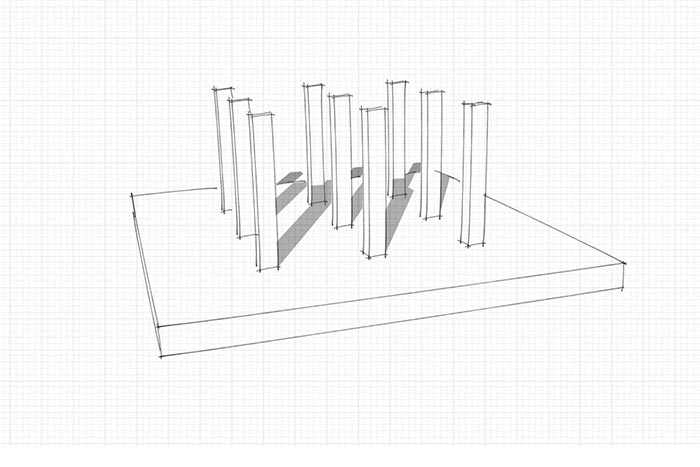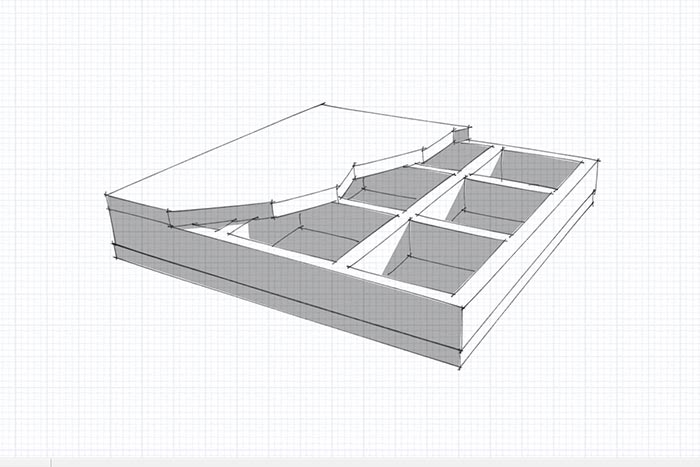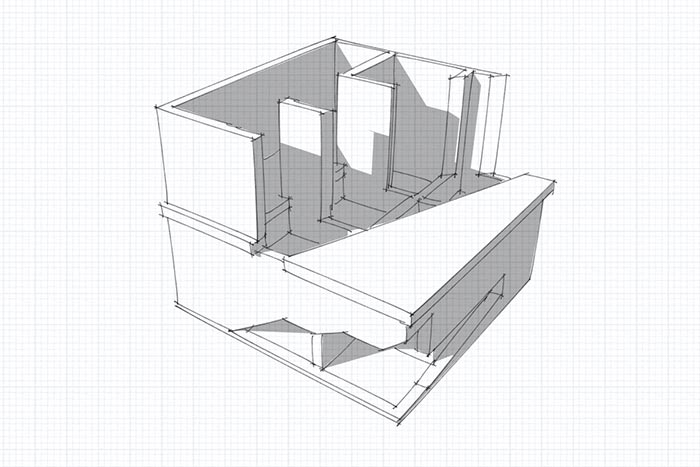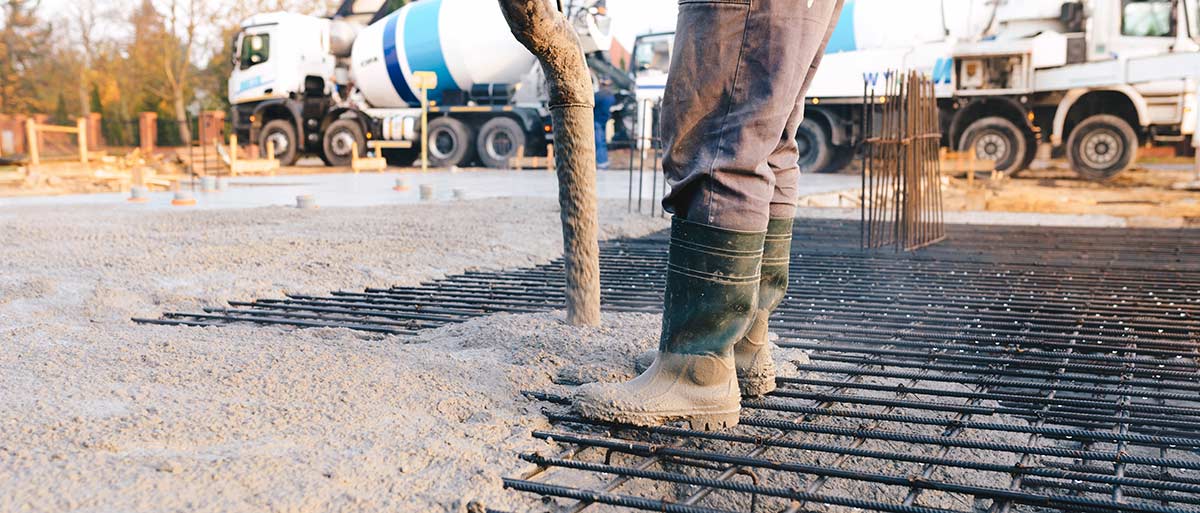Table of Contents
When looking at a new building project, construction firms need to find the most appropriate design and construction methods for that particular build, in order to come up with a cost-effective solution that can deliver on the project requirements and handle site-specific conditions. When it comes to foundations, traditional trench footings aren’t always the most suitable route, which is why every construction professional should have a firm understanding of raft foundations.
What are raft foundations?
Also known as mat foundations or raft footings, raft foundations are basically slabs of concrete that sit on a firm, level bed of soil and extend across the largest part or even the entire footprint of the build. Whilst these are shallow foundations, they can provide much better stress distribution than conventional trench footings. Because the weight of the building is spread across a much larger surface area than with traditional trench footings or pile footings, the stress acting on the soil below is greatly reduced.
When to use raft foundations
In the past, raft foundations have been widely used in the construction of commercial buildings such as warehouses or supermarkets. However, over the last few decades they are increasing in popularity as a simple and inexpensive solution for domestic construction projects, such as extensions and conservatories.
Raft foundations are suitable where a building’s footprint is reasonably small, and the structural load requirements are not onerous. They are also suitable for basement constructions where the foundation slab can receive direct live loads depending on the use of the building. On sites where the soil conditions are poor or access for large excavation plant is limited, raft foundations can again prove to be an excellent solution.
There are three types of loads which must be considered when designing concrete slabs:
- Dead load of the slab:
(Dead Load: Self weight of the slab= Mass / Weight of the slab i.e. Density *Area.) - Live load of the slab:
(Weight of Humans (Living Beings), Furniture etc. = Refer IS 875 for load condition in various types of buildings.) - Floor finish load:
(Load acting due to plaster, painting, tiles etc.)
Technical opinion
From structural point of view, in the case that the admissible soil stress is so low and/or the vertical loads that are transferred from the superstructure to the foundation through the columns and/or the walls are so high that more than 50% of the foundation footprint must be covered by isolated footings, the use of a raft foundation reduces the formwork costs significantly and therefore is highly recommended.
Types of raft foundation and example usage
There are five main types of raft foundation (click on each one to go directly to the image and details):
- Solid slab rafts,
- Slab beam rafts,
- Cellular rafts,
- Piled raft foundations; and,
- Balancing (or floating) rafts.
The first type – solid slab rafts – can be further divided as flat raft mats, wide toe rafts, blanket rafts and slip plane rafts.

Flat Raft Mat
Flat raft mats are typically used for small buildings where it’s possible to position columns at regular distances across the footprint of the building, to provide equal stress distribution on the foundation. Steel mesh is typically used at the bottom (in the column-foundation connection proximity) and the top (mid-span between columns) of the concrete mat, to provide resistance in both directions.

Wide Toe Raft
A wide toe raft is used when the ground conditions mean that to provide the necessary load support, a flat raft concrete slab would have to be extremely thick, which would make it very expensive. Instead, the slab is formed with a deeper reinforced ‘toe’ which extends to support the external side of a cavity wall.

Blanket Raft
Where the build site includes small areas of weaker soil or different soil types, a blanket raft may offer the best solution. Here, a stone ‘blanket’ is laid on the prepared ground in layers, building it up to the required level, before the concrete raft is poured on. The raft foundation and the stone blanket work together to provide an even load support, despite the areas of weakness within the footprint of the build.

Cellular rafts
This type of raft foundation comprises two concrete slabs, which lock together via ground beams. Cellular raft foundations are exceptionally rigid, and so they are most suited for ground that is likely to settle unevenly, or where very heavy loads are anticipated. Cellular rafts can also be used where significant ground heave is expected to be a problem.

Piled rafts
Piled raft foundations are less common in residential building projects, and are more often seen in larger, high-rise developments as well as in structures that require a single foundation element, such as silos, tanks and chimneys. Whereas a standard raft foundation involves a concrete slab that sits on compressed ground, the slab in a piled raft sits instead on a number of much deeper pile foundations that are bored deep enough to reach a suitably stiff soil layer. These piles are long, thin footings made of reinforced concrete or steel, and they are spaced evenly across the site. The raft then ‘floats’ on top of these pilings.
Piled raft foundations are typically used when the water table is close to the ground surface or when the minimisation of settlement is extremely important for the serviceability of the superstructure.

Balancing rafts
Balancing rafts or floating foundations are increasingly used in cases where the reduction of soil settlements is of absolute importance, as well as in projects where the soil bearing capacity is extremely low. They are created through excavation of the soil in a way that the weight of the removed soil (including the water weight) balances (entirely or partially) the weight of the superstructure plus the foundation. This solution might not be always cost-effective as it involves significant amounts of earthworks as well as a lot of work related to the construction of retaining structures (permanent or temporary) prior and during the excavation, to reach the depth of construction of the foundation. This is especially so when the water table is close to the ground surface.
Floating rafts are very popular when the excavation works must be performed within an urban environment with very strict specifications on the minimisation of settlements of neighbouring buildings. One good example of this is for the construction of large underground car parks in urban environment.
Need a Quote for Raft Foundation?
Call now or click on 'Get A Quote' above if outside office hours.
Advantages and disadvantages of raft foundations
If the designer is concerned about the limitation of settlements, for instance due to poor soil conditions, the use of raft foundations can be a very interesting alternative to trench footings.
Due to the high stiffness of raft foundations, higher values of settlements compared to isolated footings (usually double) are generally accepted as admissible during the design process. Moreover, the use of raft foundations limits the differential settlements of the structure.
N.B. It should be noted that differential settlements can be very damaging for the functionality of the superstructure (blocking of doors and windows).
Finally, in terms of design concept, raft foundations are a very versatile foundation system that can be tailored to specific soil conditions and choices of the engineer.
Whilst raft foundations offer a flexible and reliable alternative to traditional foundations, they do have their drawbacks. One key issue that can affect raft foundations is edge erosion, and the edges of the raft do need to be treated and protected to prevent this. The more complex types of raft foundation can require sizeable quantities of both concrete and steel reinforcement, making them potentially more expensive than other alternatives particularly when the soil quality is good. Additionally, drainage may be required below the raft slab, to ensure water is not trapped there. Moreover, from a geotechnical point of view, the use of deep foundations on piles up to a stiff soil layer can offer higher resistance to liquefaction due to earthquake shakings compared to raft foundations.
Why are raft foundations constructed in this way?
The principal aim of a raft foundation is to spread the load of the building across the entire available surface area under the building. This reduces the stress on the ground below, providing a solid foundation that can accommodate ground movement whilst still maintaining structural integrity. Since the raft ‘floats’ on the ground below, rather than being anchored in it, it is less prone to the effects of ground movement, due to settlements, for example.Costs of raft foundations
As with any form of construction, providing accurate costs for a ‘typical’ project is very difficult, since so much depends on the specific site conditions and the project specification. However, since excavations are generally much less than with traditional foundations (if balancing rafts are excluded), spoil removal costs are generally much lower. Site excavation also takes less time, as does preparation and concrete pouring times, which reduces labour costs.
Raft Cost Calculator
In general, for sites without complex structural load requirements, raft foundations cost significantly less than traditional approaches, and should at least be considered for every project.
The final choice of the engineer will depend on structural characteristics (e.g. weight of the superstructure, arrangement of vertical elements in plan) as well as on the specific soil properties of the site.
For many sites, raft foundations can provide a cost-effective solution that can be completed more quickly than traditional trench footings.
Where site conditions involve mixed soil types, or areas of weakness, a raft solution can easily accommodate these issues as stresses can be redistributed from locations of low soil bearing capacity to locations of higher soil bearing capacity.
Where access to the site is restricted, traditional foundations can be difficult, because the plant needed to dig to the required depth is often too large. When raft foundations are to be constructed close to the ground surface much smaller equipment is required which can be proved beneficial in cases where limited access to the site is provided (e.g. urban environment).





